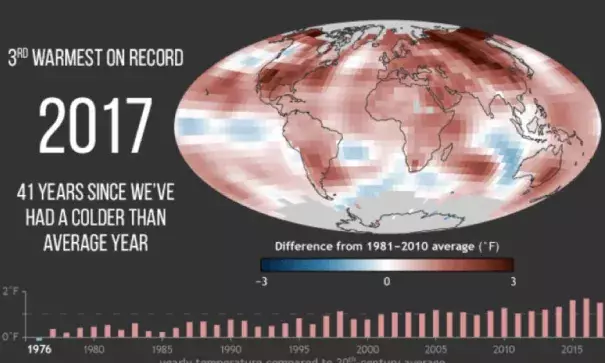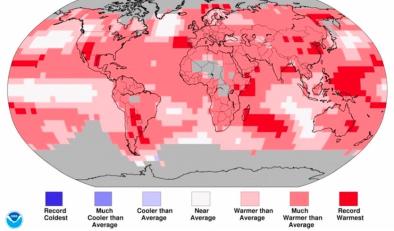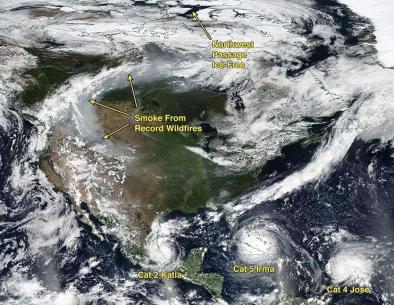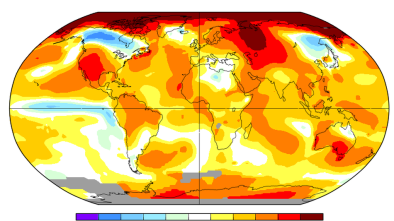2017 was Earth's third-warmest year on record

During 2017, the average temperature across global land and ocean surfaces was 1.51 degrees Fahrenheit (0.84 degrees Celsius) above the twentieth-century average. This was the third highest among all years in the 1880-2017 record, behind 2016 (warmest) and 2015 (second warmest).
The image at right shows the global surface temperature in 2017 compared to the 1981-2010 average. Places that were cooler than average are blue, while places that were warmer than average are red. Below the map is an animated bar graph that shows how long it has been since Earth had a cooler than average year. Each bar is the yearly temperature compared to the twentieth-century average from 2017 (far right) back to 1976 (far left).
2017 marks the forty-first consecutive year with global land and ocean temperatures at least nominally above the twentieth-century average, with the six warmest years on record occurring since 2010. Since the start of the twenty-first century, the [record for] annual global land and ocean surface temperature has been broken five times, three of those being set back-to-back (2014-2016).
From 1880 to 1980, a new temperature record was set on average every 13 years; however, for the period 1981-2017, the frequency of a new record has increased to once every three years. The yearly global land and ocean temperature has increased at an average rate of 0.13 degrees Fahrenheit (0.07 degrees Celsius) per decade since 1880; however, the average rate of increase is more than twice as great since 1980.
Related Content






